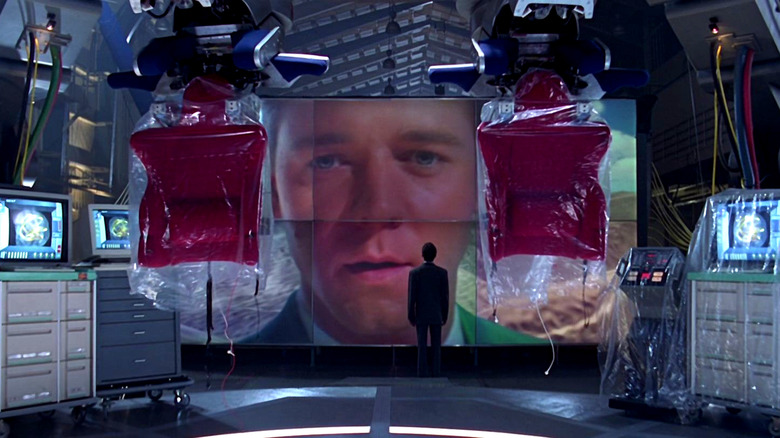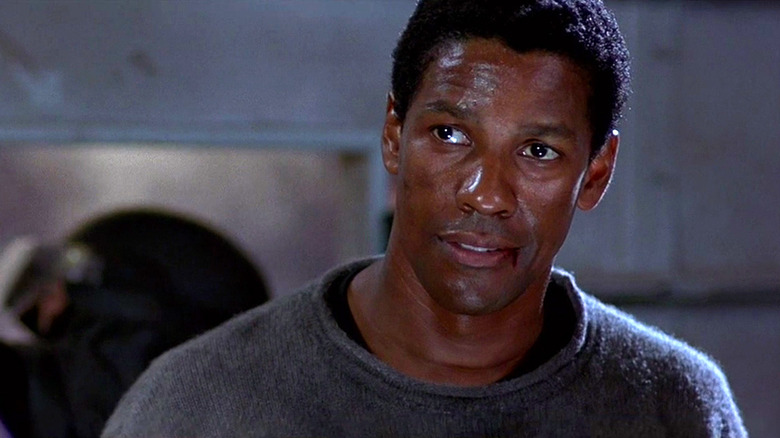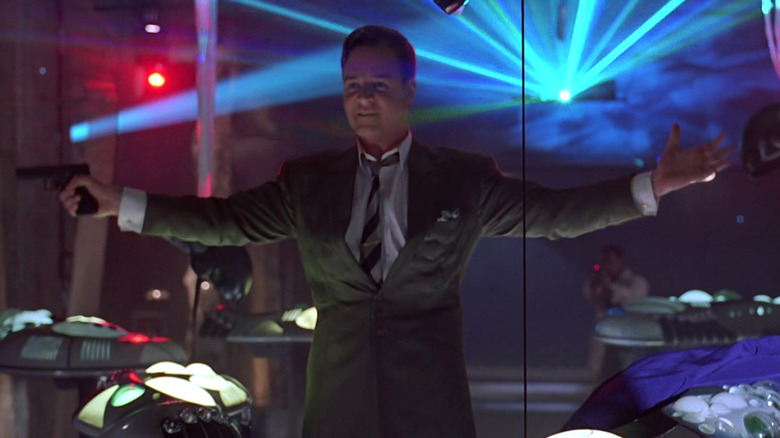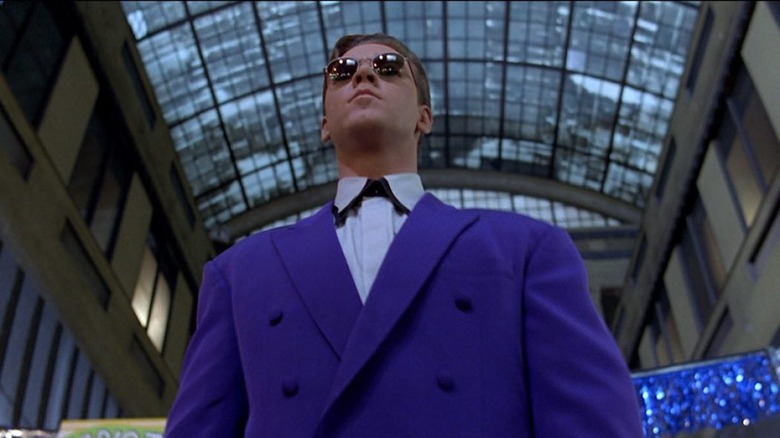How Denzel Washington's '90s Sci-Fi Thriller Virtuosity Predicted Modern AI Fears
Science fiction frequently takes contemporary fears and turns them into something much larger. Just look at Mary Shelley's "Frankenstein," considered by many to be the first science fiction novel, which took people's fears of autopsies and medical research at the time and created a fictional scientist who turned a corpse into a monster. Over a century later, writer Eric Bernt ("Surviving the Game") and director Brett Leonard ("Lawnmower Man") would create their own story of contemporary fears and their own Frankenstein's monster, too, played by Russell Crowe. The biggest difference is that while Frankenstein's monster was once human, Crowe's character SID 6.7 is a computer program given a body composed of nanobots. He is as inhuman as they come.
"Virtuosity" was released in 1995, possibly the single greatest year for weird cyberpunk sci-fi movies. In a year populated by films like "Judge Dredd," "Johnny Mnemonic," and "Tank Girl," "Virtuosity" just couldn't compete. This original story didn't have any built-in fan base from comics or novels, and it's a somewhat flawed film that's nonetheless a fascinating take on our communal fears of artificial intelligence. While we're still probably (hopefully) a ways off from a "Terminator"-style singularity in 2023, the same fears are still extremely prevalent. After all, "M3GAN," a movie about a murderous artificial mind in a robot body just killed at the box office.
While "Virtuosity" may not have a meme-worthy dance scene, it does have Denzel Washington as a cop-turned-convict who must take on Crowe in his most unhinged role, and it's a blast from the past that's still surprisingly relevant.
A movie with a lot on its mind
"Virtuosity" was a critical failure, audiences were none-too-kind, and it has not been remembered fondly. The script is, unfortunately, a bit meandering, following Washington's police officer named Parker Barnes who was imprisoned for killing the terrorist that killed his family, as he serves as a guinea pig for virtual reality training experiments. The government can't test its new program on the public or police, as it pits law enforcement against a megalomaniacal monster named SID, whose programming is comprised of the mental profiles of the most disturbed killers of all time. The technology is a bit dodgy, too, so they test it out on convicts instead.
It's clear that Bernt is trying to dig into some of the issues with both the prison system and racial tensions in the U.S. in the first act of the film, as Barnes faces off against white supremacists in his prison block and is treated like an animal by both the guards and government. Any meaning gets a little lost once the movie really kicks off and pits SID against Barnes, letting Crowe chew on the scenery (sometimes literally). It's an exciting bit of realism in an otherwise ludicrous story that helps make it feel more relatable to our own troubled times. It addresses how the worst of humanity could potentially be passed down to our computerized creations, which is the real concern at the center of "Virtuosity."
When the virtual becomes reality
"Virtuosity" wasn't the first film to deal with our fears of virtual minds gone wrong, but it is a surprisingly fun one. Drawing from its predecessors like Michael Crichton's "Westworld" and James Cameron's "Terminator," SID 6.7 had to be a singularly terrifying villain, a monstrous machine to terrify and delight audiences. Instead of being purely mechanical, however, SID 6.7 is more like the replicants of "Blade Runner" — more human than human. His body is a freakish nano-bot creation that makes him nearly indestructible as long as he has access to glass (he heals himself using silica), but his intellect is a mix of the worst human minds. Far more frightening than just a cold-hearted, binary-minded killing machine, SID 6.7 was a bold, funny creature of desire. He didn't just want to kill humans for the various reasons androids have murdered their makers over the course of science fiction history: he did it because it was fun, which is a trait we tend to think computers don't have the capacity for.
Leonard ended up wanting Crowe for the role of SID after seeing him in the Australian cult film "Romper Stomper," where he plays a vicious white supremacist gang leader. He described the character as "pure evil" and wanted that kind of vibe for his villain, who would encompass all of the evil in humanity condensed into a digital mind. We've had quite a few movies about wars between humans and machines in the time since "Virtuosity," but the film feels especially relevant again for one specific reason: "M3GAN."
From SID 6.7 to M3GAN
Everyone's favorite murderbot-du-jour is M3GAN, a high-tech "doll" at the center of the recent Blumhouse film of the same name. M3GAN wasn't created by combining the personalities of serial killers, but she is a dangerous digital being created by humanity, and she has a similarly saucy sense of humor. Crowe doesn't do dance choreography in "Virtuosity," but he does don a purple suit and strut down the aisles of a giant indoor market to the sounds of the Bee Gees' "Stayin' Alive," and it absolutely has the same energy. AI is here to stay, and so are our fears of "artificial" intelligence one day overwhelming our "natural" intelligence. If the robots are more stylish and better dancers than us, too, we're screwed.
In an interview with /Film's BJ Colangelo, "M3GAN" director Gerard Johnstone explained that technology is almost at a place where the film doesn't seem all that far-fetched:
"It's really interesting that [artificial intelligence chatting program] ChatGPT was something that one of our consultants, Peter Abell, was actually involved in. And he was talking about these kind of generative algorithms that you could have a conversation with, and that did exactly what we were setting up 'M3GAN' to do. We've been very fortunate that the timing of this movie has worked out so well. I mean, technology is just on this massive upward curve right now. It's just advancing so quickly and we're all struggling to keep up with it and figure out a way to not just regulate it, but to even put it in context."
While many people are comfortable using algorithms to predict which shows they might like or to create unsettling art with terrible hands, the idea of these algorithms having the same level of intelligence as a flesh-and-blood human is still pretty scary. Frankenstein's monster of the 21st century is both inhuman and too human, touched by the hands that created it. Our robotic nightmare will be our own creation, and films from "Virtuosity" to "M3GAN" have been warning us not to be so bold as we press onward in the name of science. Let's let Skynet sleep for a little while longer.



